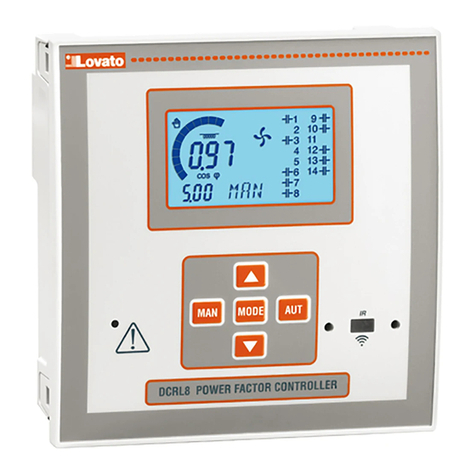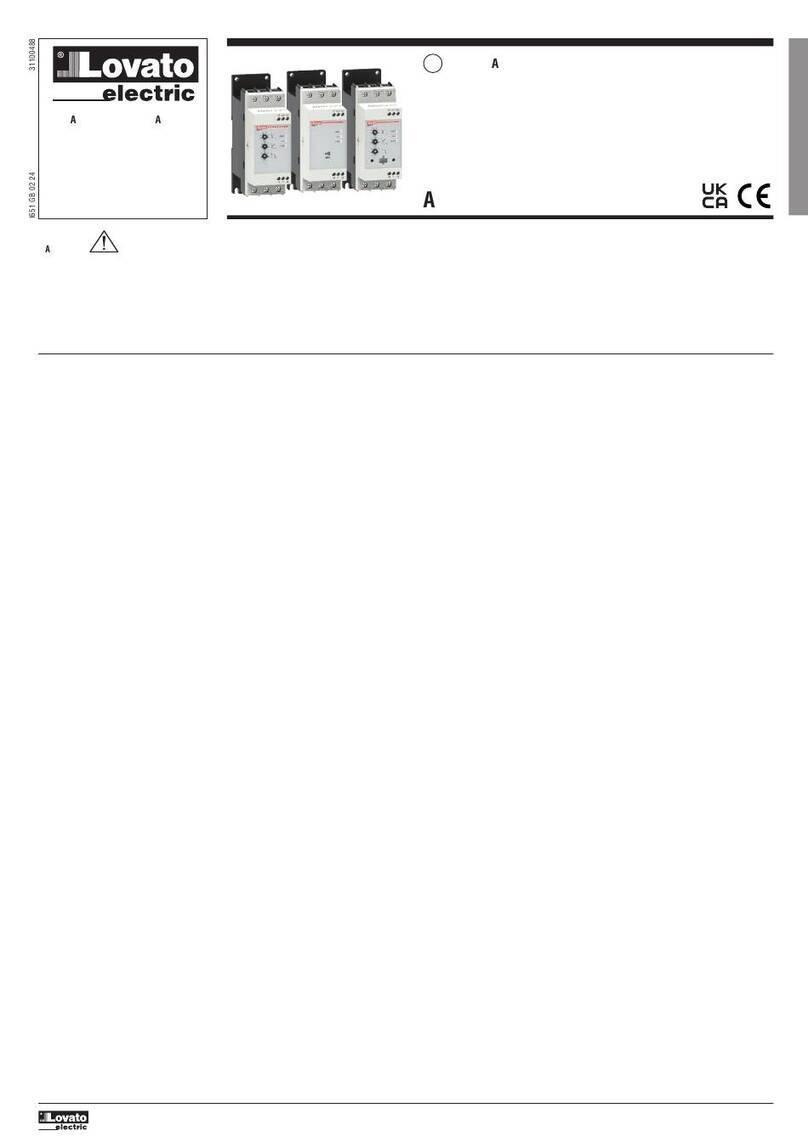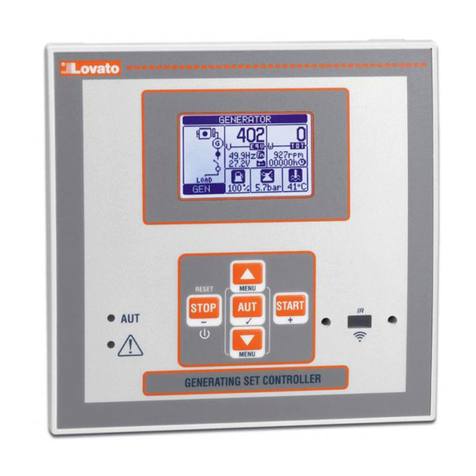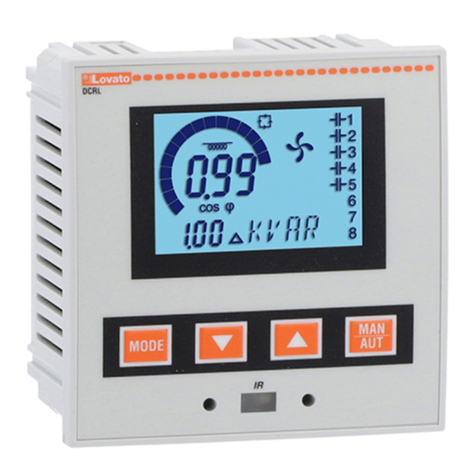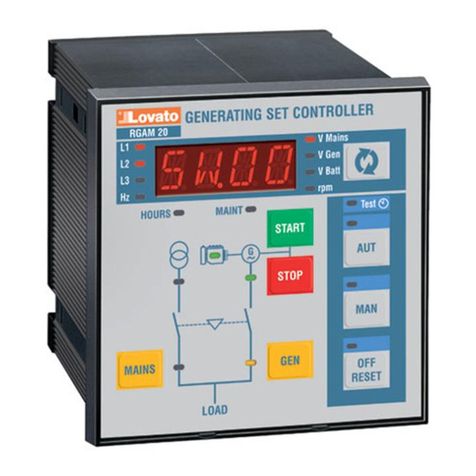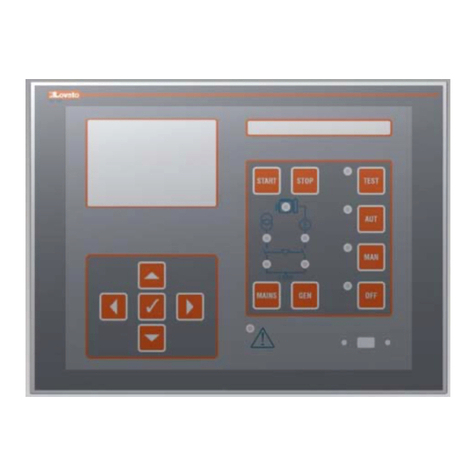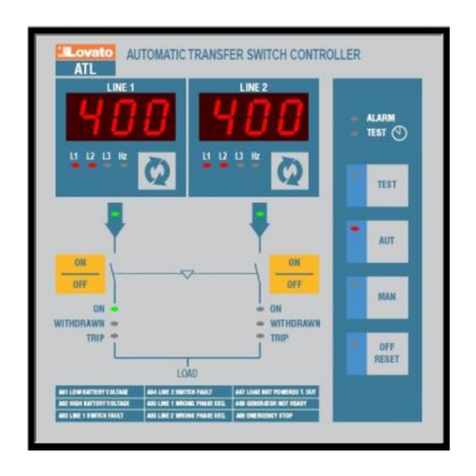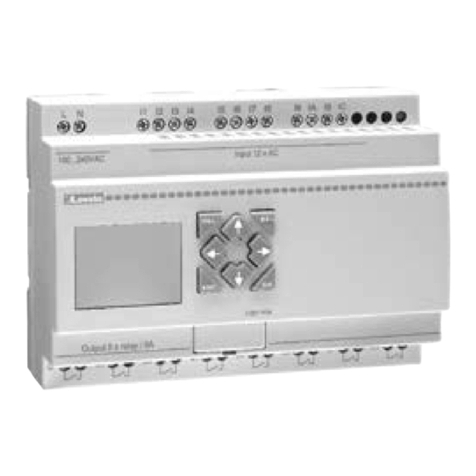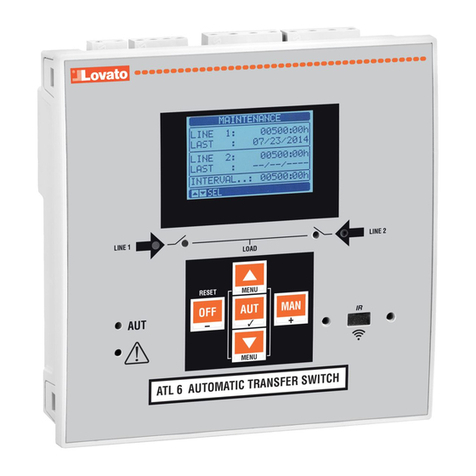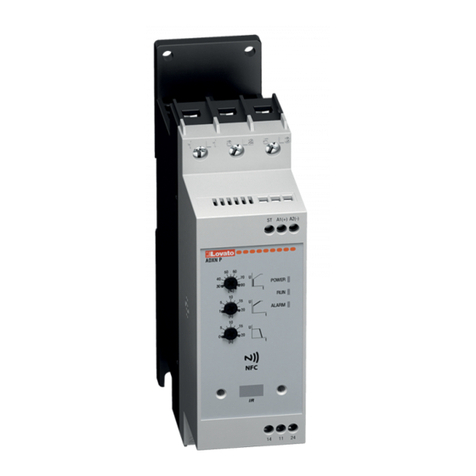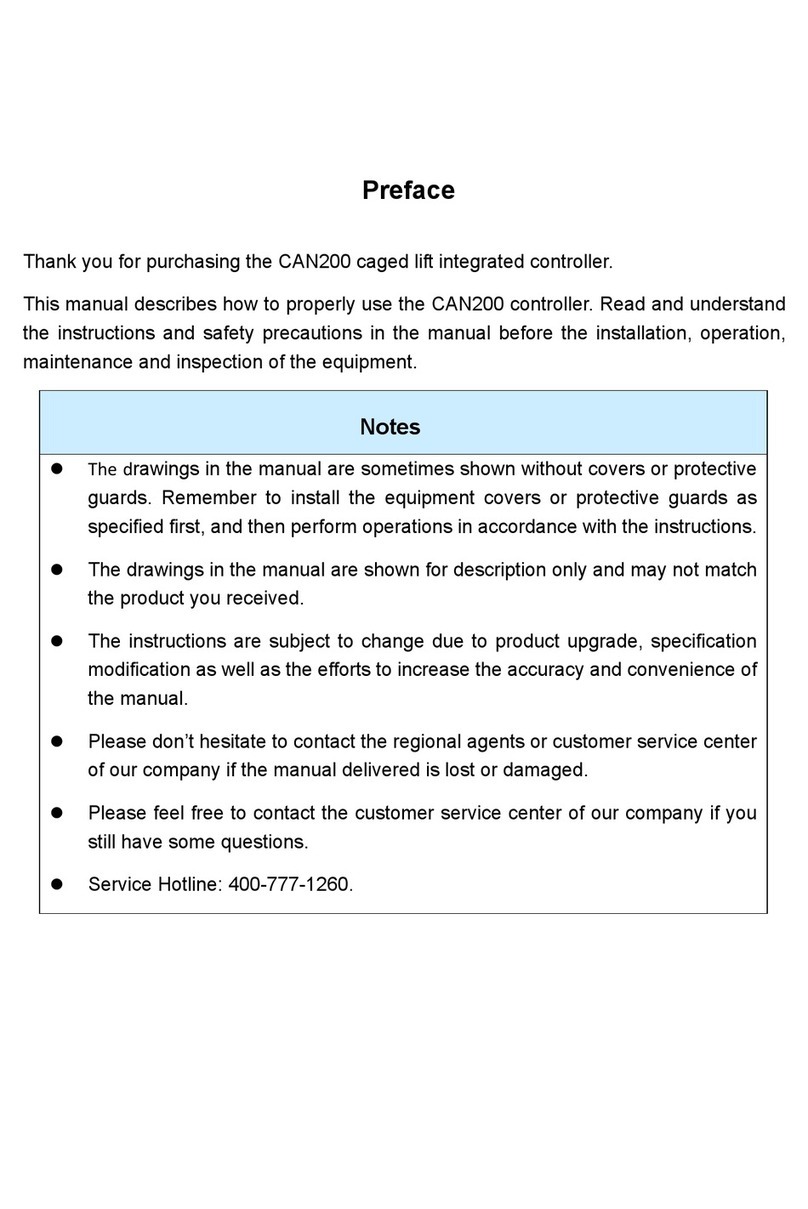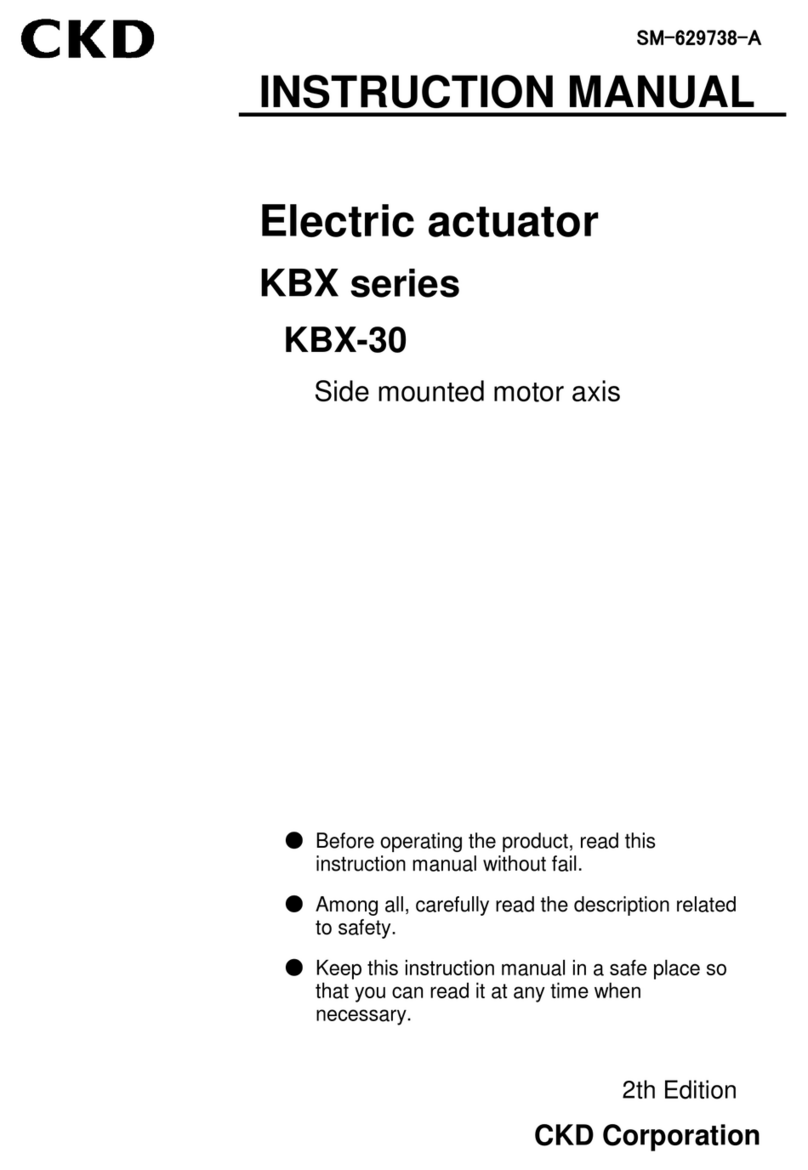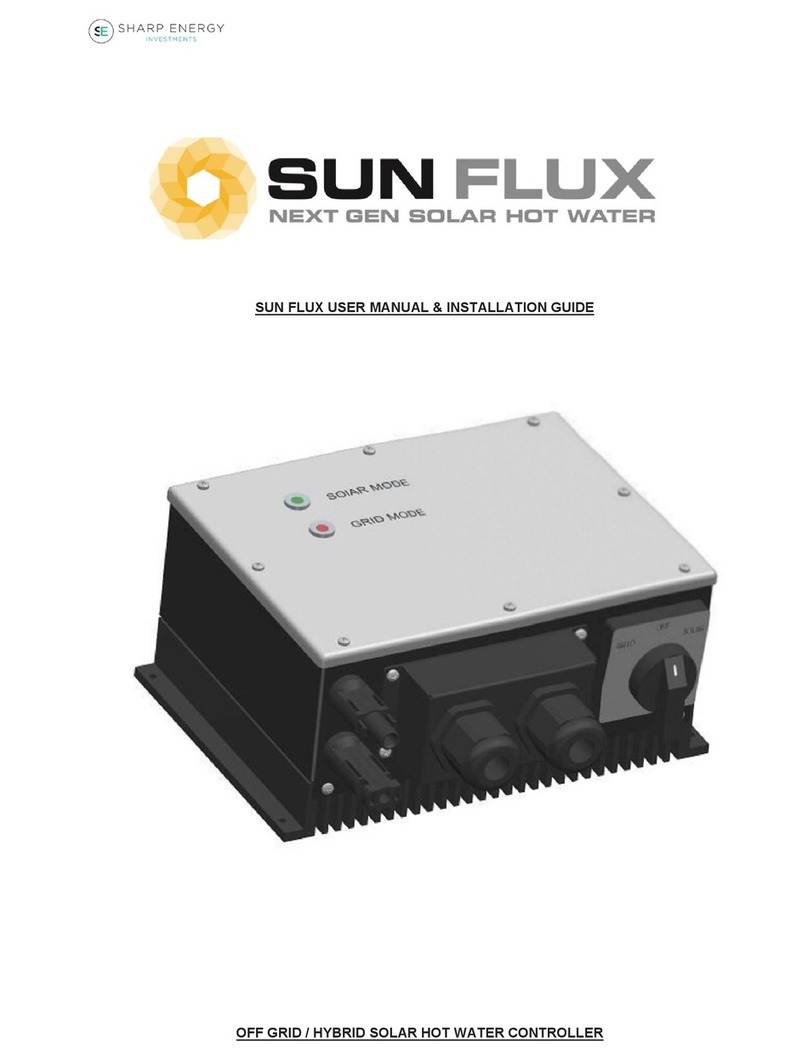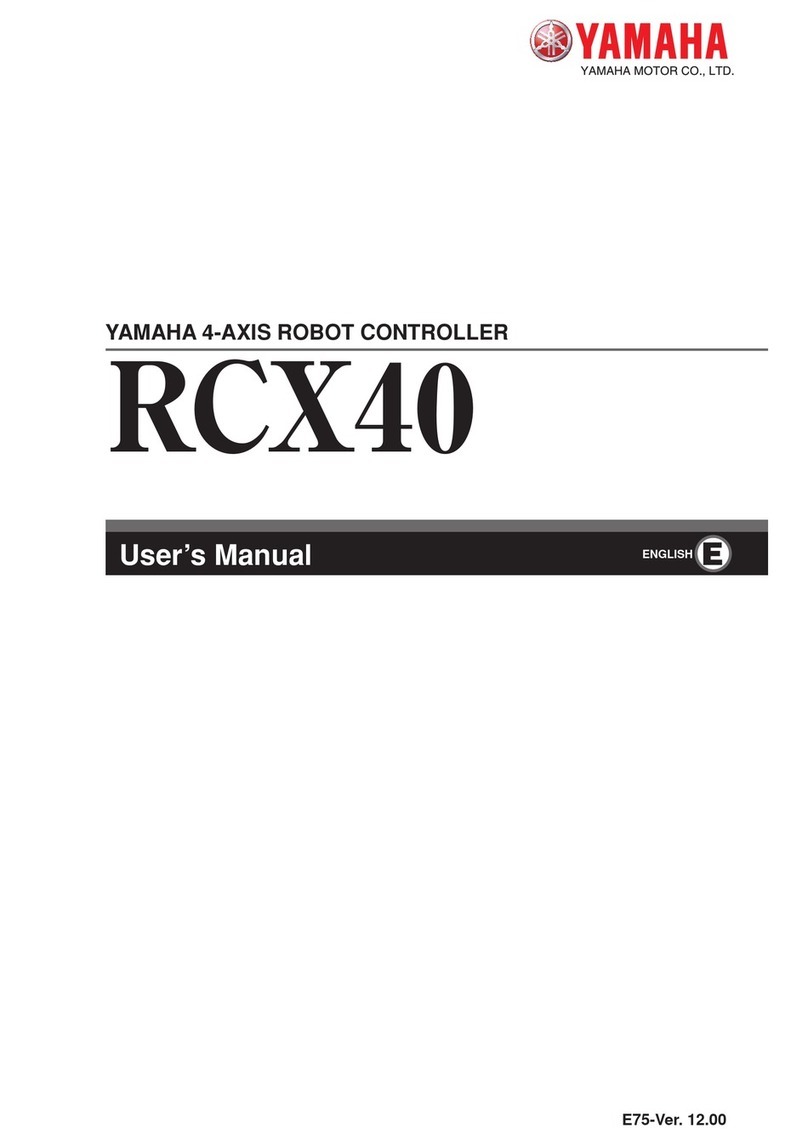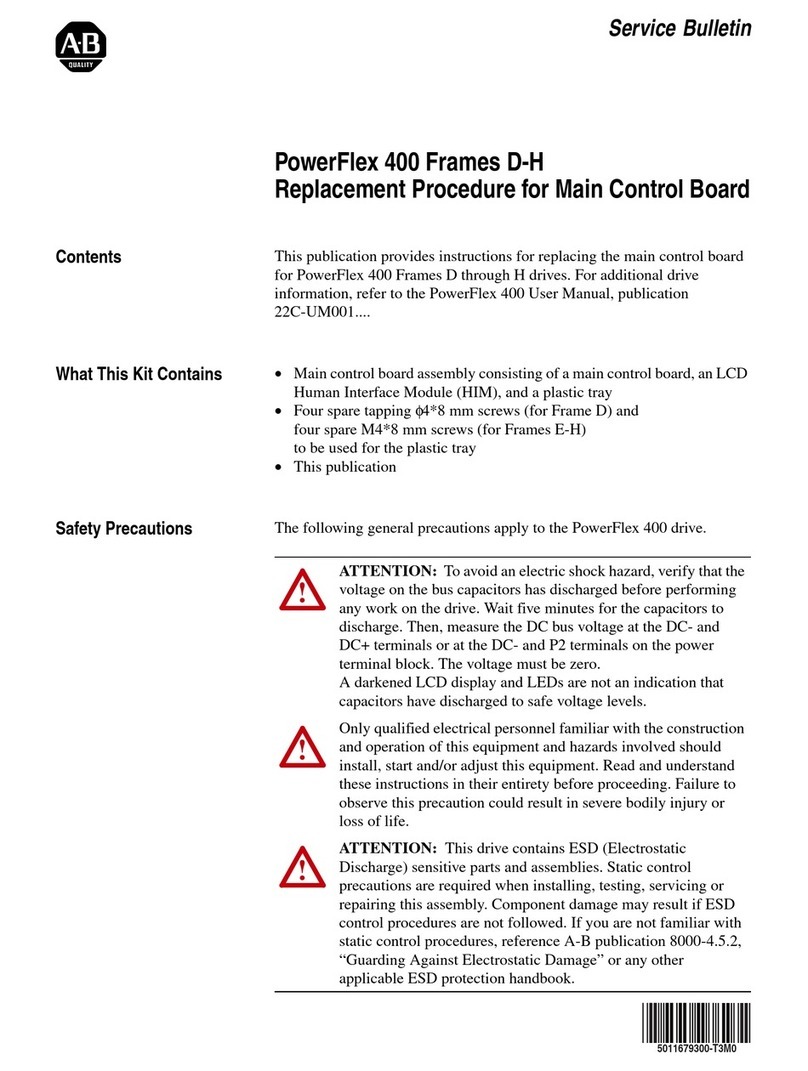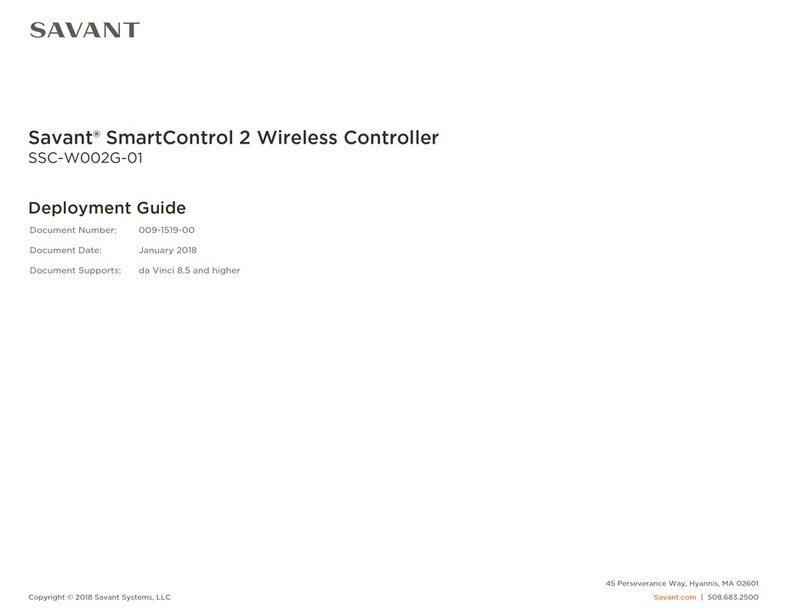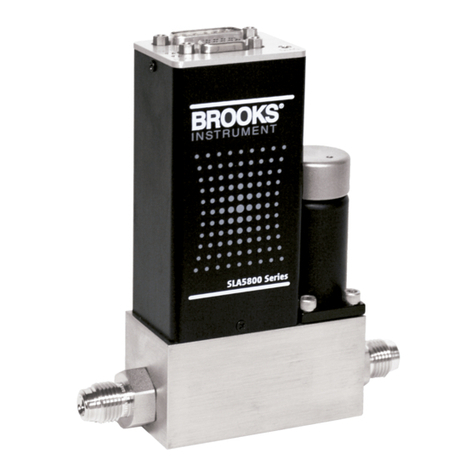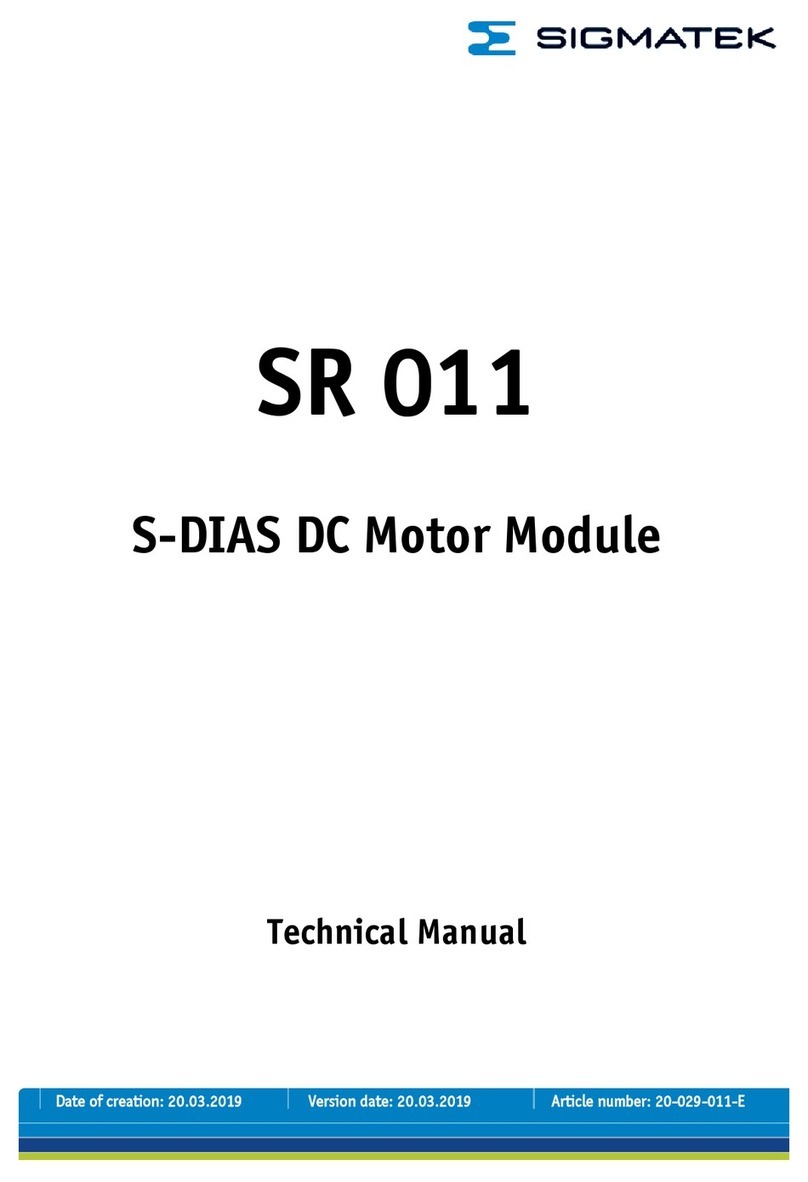
Doc: I414EGB03_16.doc 02/12/2014 p. 8 / 33
Recursos adicionales
Los módulos de expansión ofrecen recursos adicionales que se pueden
utilizar por medio de los menús de configuración correspondientes.
Los menús de configuración relacionados con los módulos de expansión
están disponibles aunque no se hayan instalado módulos.
La posibilidad de añadir varios módulos del mismo tipo (por ejemplo,
dos interfaces de comunicación) hace que haya varios menús de
configuración relacionados, que se identifican mediante un número
progresivo.
A continuación se incluye una tabla en la que se indica el número de
módulos de cada tipo que pueden instalarse al mismo tiempo y las
ranuras en las que pueden montarse. El número total de módulos debe
ser <= 2.
TIPO DE MÓDULO CÓDIGO FUNCIÓN Nº Máx. REV
COMUNICACIÓN EXP 10 10 USB 2 0
EXP 10 11 RS-232 2 0
EXP 10 12 RS-485 2 0
EXP 10 13 Ethernet 1 0
EXP 10 14 Profibus® DP 1 1
E/S DIGITALES EXP 10 00 4 ENTRADAS 2 0
EXP 10 01 4 SALIDAS
ESTÁTICAS 2 0
EXP 10 02 2 ENTRADAS +
2 SALIDAS EST. 2 0
EXP 10 03 2 RELÉS
CONMUTADOS 2 0
EXP 10 06 2 RELÉS NA 2 0
EXP 10 07 3 RELÉS NA 2 0
EXP 10 08 2 ENTRADAS +
2 RELÉS NA 2 0
dditional resources
The expansion modules provide additional resources that can be used
through the dedicated setup menus.
The setup menus related to the expansions are always accessible, even
if the expansion modules are not physically fitted.
Since it is possible to add more than one module of the same typology
(for instance two communication interfaces), the setup menus are
multiple, identified by a sequential number.
The following table indicates how many modules of each group can be
mounted at the same time. The total number of modules must be less or
equal than 2.
MODULE TYPE CODE FUNCTION MAX Nr. REV
COMMUNICATION EXP 10 10 USB 2 0
EXP 10 11 RS-232 2 0
EXP 10 12 RS-485 2 0
EXP 10 13 Ethernet 1 0
EXP 10 14 Profibus® DP 1 1
DIGITAL I/O EXP 10 00 4 INPUTS 2 0
EXP 10 01 4 STATIC
OUTPUTS 2 0
EXP 10 02 2 INPUTS +
2 ST. OUTPUTS 2 0
EXP 10 03 2 CHANGEOVER
RELAYS 2 0
EXP 10 06 2 RELAYS NO 2 0
EXP 10 07 3 RELAYS NO 2 0
EXP 10 08 2 INPUTS +
2 RELAYS NO 2 0
Canales de comunicación
Al ATL610 se pueden conectar 2 módulos de comunicación como
máximo, que se denominan COMn. El menú de configuración de las
comunicaciones consta de dos secciones (n=1 a 2) de parámetros para
configurar los puertos de comunicación.
Los canales de comunicación son totalmente independientes tanto en lo
que se refiere a hardware (tipo de interface física) como a protocolo de
comunicación.
Los canales de comunicación pueden funcionar de forma simultánea.
Si se activa la función de puerta de enlace, el ATL610 puede tener un
puerto Ethernet y un puerto RS485 que sirva de ‘vínculo’ con otros
dispositivos que solo incorporan un puerto RS-485 para economizar
(1 único puerto Ethernet).
En esta red, el ATL610 con puerto ethernet tendrá la función de puerta
de enlace de ambos canales de comunicación (COM1, COM2)
configurada en ON, mientras que los demás dispositivos tendrán la
puerta de enlace configurada en OFF.
Communication channels
The ATL610 supports a maximum of 2 communication modules,
indicated as COMn. The communication setup menu is thus divided into
two sections (n=1 … 2) of parameters for the setting of the ports.
The communication channels are completely independent, both for the
hardware (physical interface) and for the communication protocol.
The two channels can communicate at the same time.
Activating the Gateway function it is possible to use an ATL610 with both
an Ethernet port and a RS485 port, that acts as a bridge over other
devices equipped with RS-485 only, in order to achieve a more
economic configuration (only one Ethernet port).
In this network, the ATL610 with Ethernet port will be set with both
communication channels (two among COM1, COM2) with Gateway
function set to ON, while the other devices will be configured normally
with Gateway = OFF.
Entradas, salidas, variables internas y contadores
Las entradas y las salidas se identifican mediante una abreviatura y un
número consecutivo. Por ejemplo, las entradas digitales se denominan
INPx, donde x es el número de la entrada. Las salidas digitales se
denominan OUTx.
CÓD. DESCRIPCIÓN BÁSICO EXP (ATL610)
INPx Entradas digitales 1 a 6 7 a 14
OUTx Salidas digitales 1 a 7 8 a 15
Al igual que las entradas/salidas, existen variables internas (bit) que
pueden asociarse a las salidas o combinarse entre sí. Por ejemplo, se
pueden aplicar valores límite de umbral a las medidas que realiza el
sistema. En este caso, la variable interna (denominada LIMx) se activa
cuando la medida está fuera de los límites que ha definido el usuario en
el menú de configuración correspondiente.
Además, hay disponibles un máximo de 4 contadores (CNT1 a CNT4)
que pueden contar impulsos externos (procedentes de entradas INPx) o
la cantidad de veces que se produce una condición determinada. Por
ejemplo, si se define un umbral LIMx como origen de recuento, será
posible contar las veces que una medida supera un valor determinado.
En la siguiente tabla aparecen todas las variables internas que gestiona
la unidad ATL600 y su rango correspondiente (número de variables por
tipo).
Inputs, outputs, internal variables, counters
The inputs and outputs are identified by a code and a sequence number.
For instance, the digital inputs are identified by code INPx, where x is the
number of the input. In the same way, digital outputs are identified by code
OUTx.
COD DESCRIPTION BASE EXP (ATL610)
INPx Digital Inputs 1…6 7…14
OUTx Digital Outputs 1…7 8…15
In a similar way, there are some internal bit-variables (markers) that can
be associated to the outputs or combined between them. For instance, it
is possible to apply some limit thresholds to the measurements done by
the system. In this case, an internal variable named LIMx will be
activated when the measurements will go outside the limits defined by
the user through the dedicated setting menu.
Furthermore, there are up to 4 counters (CNT1..CNT4) that can count
pulses coming from an external source (through a digital input INPx) or
the number of times that a certain condition as been verified. For
instance, defining a limit threshold LIMx as the count source, it will be
possible to count how many times one measurement has exceeded a
certain limit.
The following table groups all the I/O and the internal variables managed
by the ATL600, with highlighting of their range (variables number per
type).

